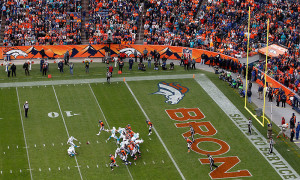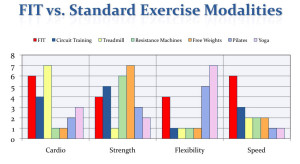Sports are a huge time commitment, especially when in high school. From getting home late, to being exhausted from practice, schoolwork can be a real struggle. With that said, it also teaches you invaluable time management skills that simply can not be learned in another environment. So my question is: Does sports have any effect on academic performance?
Null Hypothesis: Sports has no effect on academic performance.
academic performance.
Alternative Hypothesis: Sports does have an effect on academic performance.
In many high schools, athletic prowess trumps academic prowess big time. When budget cuts come around, football and soccer are not being cut, it is activities like Math Team and Quiz Bowl that see the effects. Does this mean that academic achievements and goals are not being accomplished? In a study of Ohio high schools, it was found that “high schools that devote more energy to athletic success also tend to produce more academic success” (EducationNext). The study found that a 10 percent increase in winning percentage links to a .25 percentage point increase in the number of students at or above academic proficiency.
The sport that had the largest effect was football, which is not surprising because it is often the most popular sport in high school. It is hard to make a causal claim that athletics is linked to achievement based on this data, but the data is clearly consistent with such a conclusion. I see the threat of reverse causation as a real threat in such an area as well. While not considered, having smarter students on the athletic teams may cause the team to perform better. Having a smart, above average player is more beneficial than having a bonehead, outstanding player in my cases.
While the previous study looked at the effect on the student body of a school as a whole, there are definitely benefits to playing sports on the individual level as well. In a study led by Liberty University, the GPA of athletes was examined during and after a sporting season. The study found a significant difference in the GPA scores during and after sports seasons. It specifically found that GPA decreases following a sports season, which supports the theory that participating in sports positively affects GPA. The change in GPA during and after the sports season was extremely significant in males, while not nearly as significant in females. This could be attributed to the overall hypothesis that females are better students, but it can not be concluded for sure. Based on this information, overall there is clearly a correlation between participating in sports and academic achievement. Again, it is hard to determine that there is a causal relationship, but the evidence again supports such a stance.
A study from the University of Kansas analyzed the academic performance of student-athletes and students. The study showed “athletes had higher percentages of days of school attended, graduation rates, and Kansas assessment scores and lower dropout rates than nonathletes”
(KU). Angela Lumpkin, who analyzed the data, made a great point when she stated, “In general, an athlete is not smarter than a nonathlete” (KU). I found this quote very accurate and interesting. Playing sports does not mean an individual is smarter than a nonathlete. The studies and their results simply show that athletes achieve better. There is no causation between innate knowledge and playing sports, but I do believe there is causation between work ethic and better grades. I think that athletes have a work ethic which translates from the sports into the classroom because they know they need to perform in the classroom to be able to participate in the extracurricular activities.
Based on the studies I have found, I would have to reject the null hypothesis. There clearly is a correlation present when examining athletes and academic performance. I would argue that there is causation as well. I do not believe this means that athletes are smarter than nonathletes. I see this as a result of work ethic. Athletes work hard because they know they need to perform well in school to even get the chance to perform well on the field, court, track, etc.


 e aggressive and violent individuals. Without seeing any studies, I would be led to believe that this is an accurate assumption, and the results of studies also back this up.
e aggressive and violent individuals. Without seeing any studies, I would be led to believe that this is an accurate assumption, and the results of studies also back this up.


 er Olympics in when many beach volleyball players were spotted wearing it. The purpose of the tape is that it supposedly “
er Olympics in when many beach volleyball players were spotted wearing it. The purpose of the tape is that it supposedly “

 nt factor in deciding which to use is preference. For instance, I use both. It depends what I am doing or what I am trying to accomplish. Most of the time, I do free weights first, allowing all of the muscles to get engaged in the activity. Then, if I want to target a muscle i will use machines toward the end of the workout. I would recommend using resistance machines until you can do a relatively large amount of weight because keeping the weights stable is half the battle of using free weights. All in all, it is a matter of preference. I personally use both, but the most important thing is finding a workout that suits you best.
nt factor in deciding which to use is preference. For instance, I use both. It depends what I am doing or what I am trying to accomplish. Most of the time, I do free weights first, allowing all of the muscles to get engaged in the activity. Then, if I want to target a muscle i will use machines toward the end of the workout. I would recommend using resistance machines until you can do a relatively large amount of weight because keeping the weights stable is half the battle of using free weights. All in all, it is a matter of preference. I personally use both, but the most important thing is finding a workout that suits you best.

